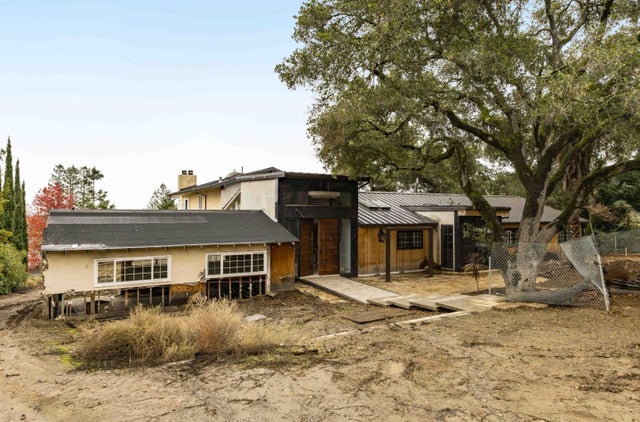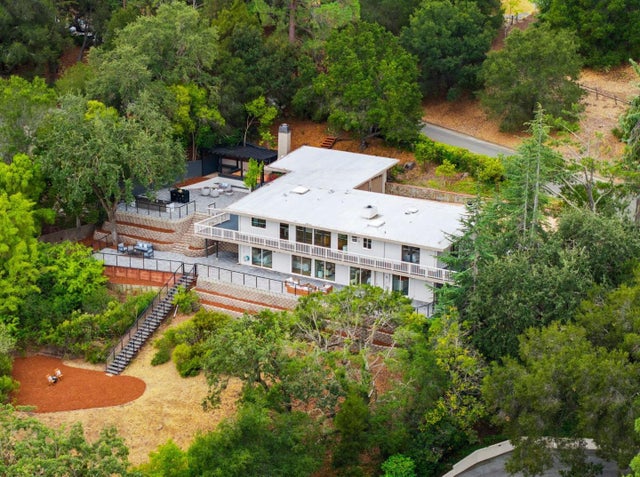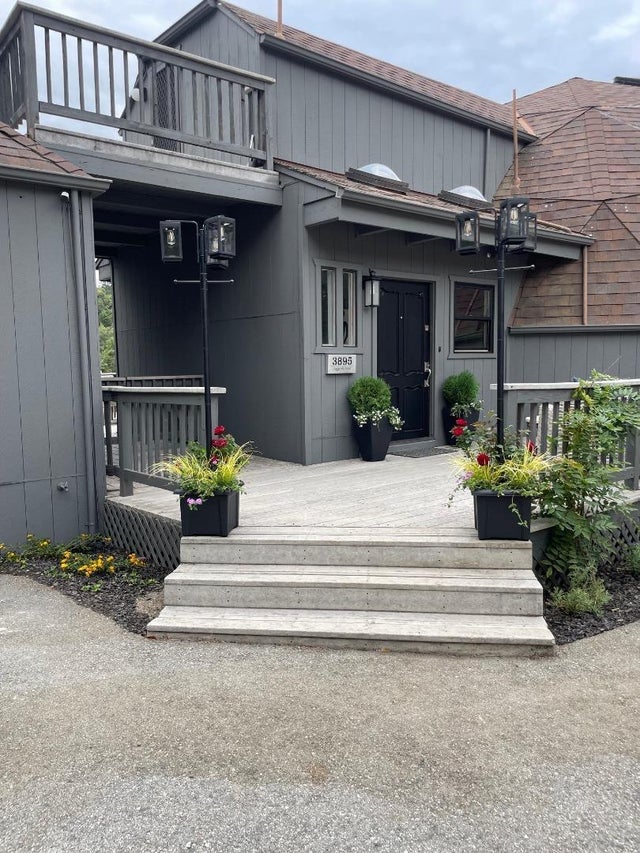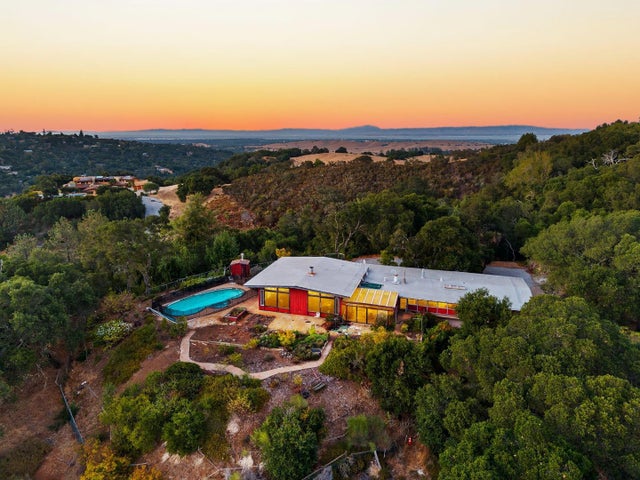- Single Family Residential
- 6 Beds
- 4 Baths
- 4,270 SqFt
Palo Alto Real Estate
Earliest recorded history stems from 1769, when Gaspar de Portolà noted an Ohlone settlement. This remains an area of known Indian mounds. A plaque is erected at Middlefield Road and Embarcadero Road to commemorate this area.
The city got its name from a tall tree, El Palo Alto, by the banks of the San Francisquito Creek bordering Menlo Park. You can still find half of this tree (the other half was destroyed when the creek flooded) along the foot bridge on Alma Street. A plaque recounts the story of a 63 man, 200 horse expedition from San Diego to Monterey from November 7–11, 1769. The group overshot and reached the San Francisco Bay instead. Thinking the bay was too wide to cross, the group decided to turn around near 'el palo alto.'
About 1827 Rafael Soto, tenth child and son of De Anza Expedition settler Ygnacio Soto and María Bárbara Espinosa de Lugo of Alta, California came to stay with Maximo Martinez at his Rancho Corte de Madera for seven years. Located south of the San Francisquito Creek, west of today's I-280, Rancho Corte de Madera covered most of Portola Valley to Skyline Boulevard extending south to about Foothill College. In 1835, Rafael Soto and family settled near the San Francisquito Creek near Newell and Middlefield, selling goods to travelers. Rafael Soto died in 1839, but his wife, Maria Antonio Mesa, was granted Rancho Rinconada del Arroyo de San Francisquito in 1841.
Their daughter María Luisa Soto married in 1839, John Coppinger, who was the grantee of Rancho Cañada de Raymundo. Rancho Cañada de Raymundo was West of San Francisquito Creek, and began at Almbique Creek, the north border of Rancho Corte de Madera, and extended north, including present day Woodside. Bear Gulch Creek (Bear Creek) flowed on his land in Portola Valley. The rancho also abutted Buelna's grant near Skyline Boulevard and Matadero Creek. Upon Coppinger's death, Maria inherited it and later married a visiting boat captain, John Greer. Greer owned a home on the property that is now Town & Country Village on Embarcadero and El Camino Real. Greer Avenue and Court are named for him. To the west of Rafael Soto, near El Camino and following the Creek, was Rancho San Francisquito granted in 1839, to Antonio Buelna and wife Maria Concepcion.
To the south of the Sotos, the brothers, Secundino and Teodoro Robles, in 1849 bought Rancho Rincon de San Francisquito from José Peña, the 1841 grantee. The grant extended from San Francisquito Creek, Alpine Road and Bishop Ln. (behind Stanford Shopping Center) and golf course. Then South along the Santa Cruz Foothills between Junipero Serra & Hwy 280 to the (Intersection of Matadoro Creek/ Hillview /Miranda) & then SW near the intersection of Page Mill & Arastradero Rd. where the Jone's House was), then east down Arastradero Rd. to the north property line of Alta Mesa Memorial Park and Terman Park. Follow the trail of what was once the old stage road over Adobe Creek/Yuegas Creek to El Camino Real & then east on San Antonio Rd. to the Bay marshes passing over the RR and what was once the Jeffry's House & Stables. The property then went along the bay to the Embarcadero, a major boundary in the day. Then up to the Stanford University gates, up Galvez and along Campus way to the hills near the golf course. The grant was bounded on the south by Mariano Castro's Rancho Pastoria de las Borregas grant across San Antonio Road. That's the Robles Rancho, about 80% of Palo Alto and Stanford University. It was whittled down by 1863 through courts to 6,981 acres (28.25 km2). Stories say their grand hacienda was built on the former meager adobe of José Peña near Ferne off San Antonio Road, midway between Middlefield and Alma Street. Their hacienda hosted fiestas and bull fights. It was ruined in the 1906 earthquake and its lumber was used to build a large barn nearby which it is said lingered until the early 1950s. In 1853, they sold 250 acres (1 km²), comprising the present day Barron Park, Matadero Creek and Stanford Business Park, to Elisha Oscar Crosby, who coined Mayfield. In 1880 Secundino Robles, father to twenty-nine children, still lived near present day Sears store.
Many of the Spanish names in the Palo Alto area represent the local heritage and descriptive terms and former residents. Pena Court, Miranda Avenue, which was essentially Foothill Expwy was the married name of Juana Briones and the name occurs in Courts and Avenues others in Palo Alto to Mountain View in the quadrant where she owned vast areas between Stanford Univ., Grant Road in Mountain View and west of El Camino. Yerba Buena was to her credit. Rinconada was the major Mexican land grant name.
University Avenue at the Circle with train steaming toward El Palo Alto, 1894
The township of Mayfield was formed in 1855, in what is now part of South Palo Alto. Leland Stanford starting buying land in the area in 1876 for a horse farm, which became a university after his son died in 1884. In 1886, Stanford came to Mayfield, interested in founding his university there. He had a train stop created near his school on Mayfield's downtown street, Lincoln Street (now named California Avenue). However, he had one condition: alcohol had to be banned from the town. Known for its 13 rowdy saloons, Mayfield rejected his requests for reform. This led him to drive the formation of Palo Alto, originally called University Park, in 1887 with the help of his friend Timothy Hopkins of the Southern Pacific Railroad who bought 740 acres (3.0 km2) of private land for the new townsite. Stanford set up his university, Stanford University, and a train stop (on University Avenue) by his new town. With Stanford’s support, saloon days faded and Palo Alto grew to the size of Mayfield. On July 2, 1925, Palo Alto voters approved the annexation of Mayfield and the two communities were officially consolidated on July 6, 1925. This saga explains why Palo Alto has two downtown areas: one along University Avenue and one along California Avenue.
The Mayfield News wrote its own obituary four days later:
It is with a feeling of deep regret that we see on our streets today those who would sell, or give, our beautiful little city to an outside community. We have watched Mayfield grow from a small hamlet, when Palo Alto was nothing more than a hayfield, to her present size … and it is with a feeling of sorrow that we contemplate the fact that there are those who would sell or give the city away.
Many of Stanford University’s first faculty members settled in the Professorville neighborhood of Palo Alto. Professorville, now a registered national historic district, is bounded by Kingsley, Lincoln, and Addison avenues and the cross streets of Ramona, Bryant, and Waverley. The district includes a large number of well preserved residences dating from the 1890s, including 833 Kingsley, 345 Lincoln and 450 Kingsley. 1044 Bryant was the home of Russell Varian, co-inventor of the Klystron tube. The Federal Telegraph laboratory site, situated at 218 Channing, is a California Historical Landmark recognizing Lee de Forest's 1911 invention of the vacuum tube and electronic oscillator at that location. While not open to the public, the garage that housed the launch of Hewlett Packard is located at 367 Addison Avenue. Hewlett Packard recently restored the house and garage. A second historic district on Ramona Street can be found downtown between University and Hamilton Avenues.
Palo Alto Homes for Sale
| All Listings | Over $1,000,000 |
- Single Family Residential
- 4 Beds
- 3 Baths
- 3,421 SqFt






